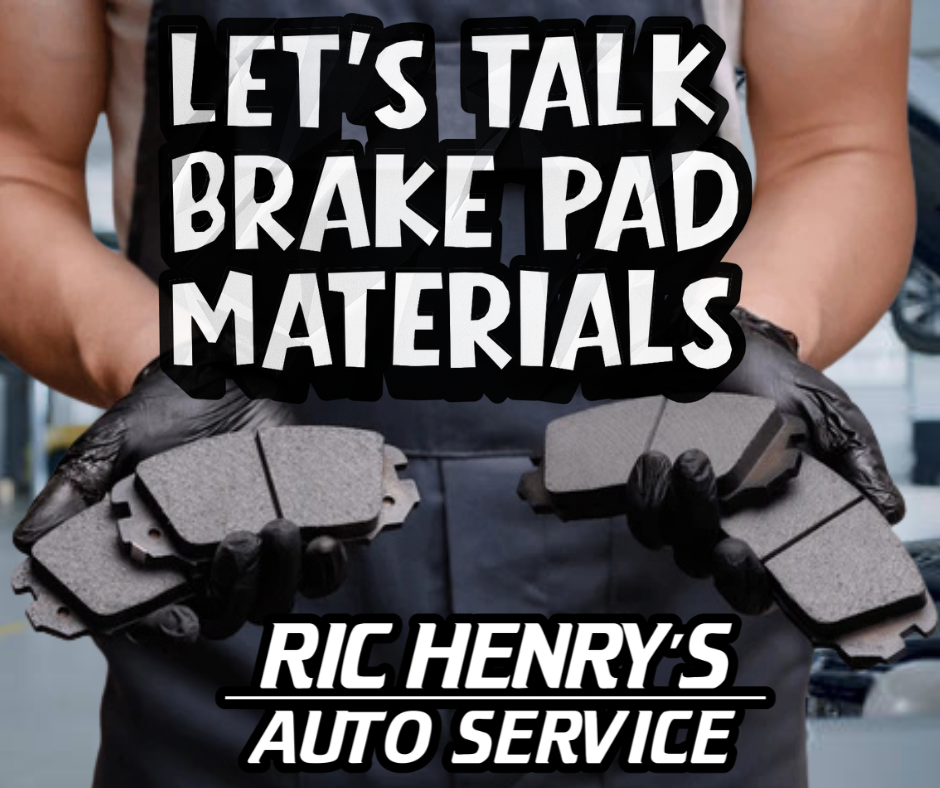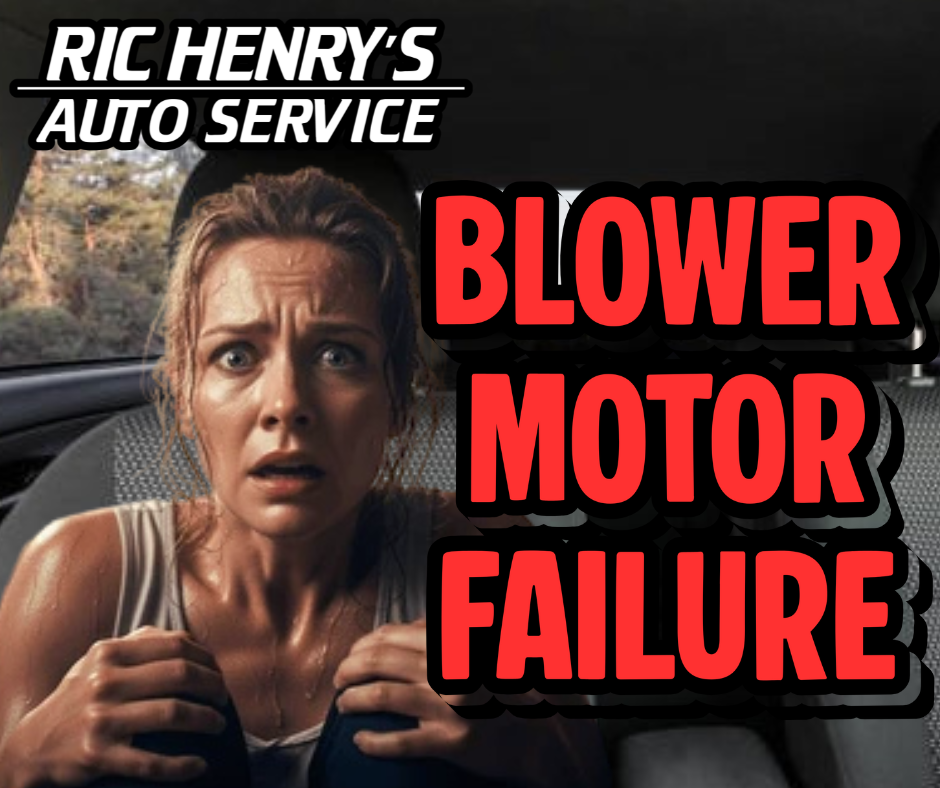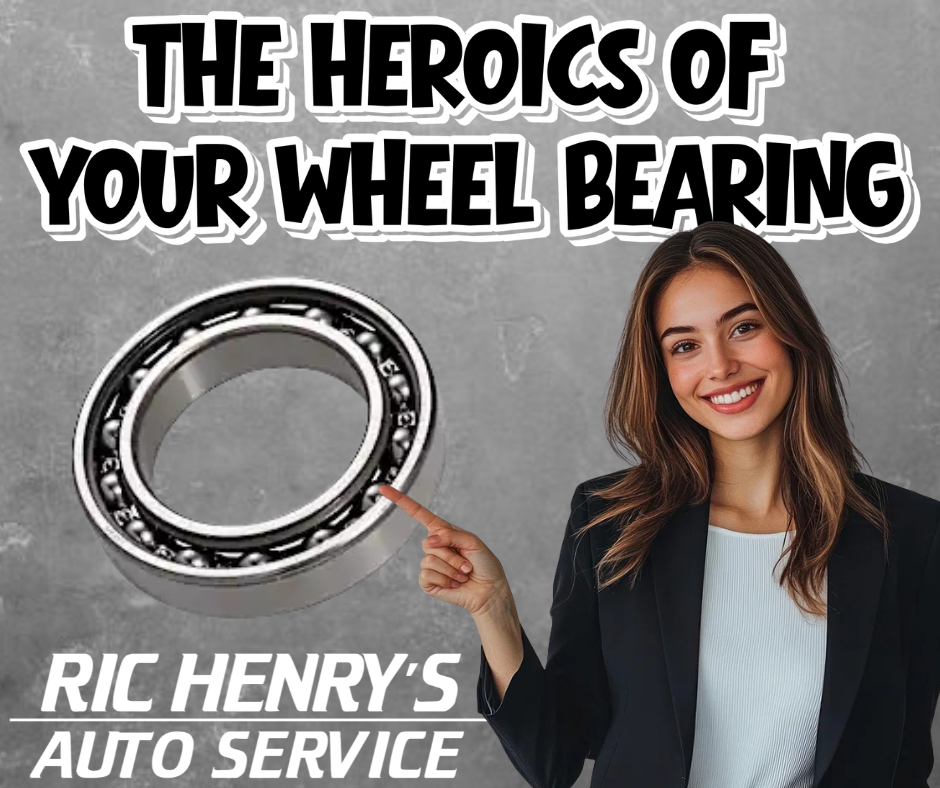The Squealing, Screeching Evolution of Brake Pads
NaTasha Brand • November 18, 2025
Asbestos to Ceramics

Here in San Angelo, our brakes aren't just a suggestion, they're a necessity. Whether you're navigating a sudden dust storm out on Arden Road, coming to a smooth stop in front of the Concho Pearl, or dealing with the occasional livestock crossing on the way to Christoval, your brake pads are your number one co-pilot. But have you ever wondered what those unsung heroes are actually made of? The journey of friction materials is a tale of chemistry, physics, and a relentless pursuit of stopping power without the soundtrack.
Let's take a ride through the history and science of what stands between you and a fender-bender.
The Material World: A Lineup of Stopping Power
Not all brake pads are created equal. The choice of material is a constant balancing act between stopping power, noise, dust, rotor wear, and cost.
The Old Guard: Organic/Non-Asbestos Organic (NAO)
• What's In Them: A mix of glass, rubber, Kevlar, and carbon, bound together with resin.
• The Good: These are the quiet, polite neighbors of the brake pad world. They're gentle on your rotors, produce very little dust, and are easy on the wallet.
• The Not-So-Good: They have a lower tolerance for the heat generated by hard stops. If you're towing a boat to O.H. Ivie Lake or navigating a panic stop, they can fade faster and wear out more quickly. They're best for sedans and relaxed city driving.
The Workhorse: Semi-Metallic
• What's In Them: A hearty blend of 30% to 65% metals like steel, copper, and iron, mixed with graphite lubricant and a filler.
• The Good: These are the tough, ranch-hand pads. They excel at heat dissipation, making them more resistant to fade during heavy use. They offer strong, initial bite and are durable, making them a popular OEM choice for trucks and SUVs common on West Texas roads.
• The Not-So-Good: They can be noisier, produce more of that black, sticky dust on your wheels, and are harsher on brake rotors, causing them to wear faster.
The Modern Marvel: Ceramic
• What's In Them: Dense ceramic compounds embedded with copper fibers.
• The Good: Ceramic pads are the luxury sedans of the friction world. They offer incredibly quiet operation, produce a light, non-abrasive dust that doesn't stain your alloys, and provide consistent performance across a wide temperature range. They're also easier on your rotors.
• The Not-So-Good: The primary drawback is cost, they are the most expensive option. They also may not have the same aggressive initial "bite" as a semi-metallic pad when cold, which is why some performance drivers still prefer metal.
Why Car Manufacturers Play Favorites
So why does your new truck come with semi-metallics while your neighbor's sedan has ceramics? It's all about the intended use.
• Performance Vehicles: Often use specialized semi-metallics or even more exotic materials for maximum bite and heat resistance at the track (where noise is irrelevant).
• Luxury Vehicles: Almost exclusively use ceramics to prioritize the quiet, clean, and smooth braking experience their buyers expect.
• Trucks & SUVs: Frequently come with semi-metallics from the factory to handle the increased weight and potential for towing and hauling.
The Universal Cry for Help: Symptoms You Need New Pads
No matter the material, all brake pads send the same distress signals. Heed these warnings:
• The High-Pitched Squeal: A built-in wear indicator, a small metal tab, makes contact with the rotor, giving you an audible (and often annoying) "change me now!" alert.
• The Grinding Growl: If you ignore the squeal, you'll get a grinding sound. This is metal backing plate grinding on metal rotor. You are now causing expensive damage with every stop.
• The Deep Dive: Your brake pedal travels closer to the floorboard than it used to.
• The Pull: Your vehicle pulls to one side when braking, indicating one side is working harder than the other.
• The Shimmy: A pulsation or vibration in the brake pedal or steering wheel often indicates warped rotors, frequently caused by worn pads letting heat build up unevenly.
Trust Your Stopping Power to Ric Henry's Auto Service
Choosing the right brake pad for your driving style and vehicle is a professional's job. The experts at Ric Henry's Auto Service in San Angelo don't just slap on any set of pads. We'll discuss your driving habits—whether you're a city commuter, a highway hauler, or someone who needs top performance for towing—and recommend the perfect friction material for your needs.
Our experienced technicians are equipped with the same advanced tools and equipment the dealerships use, ensuring a precise and safe installation every time. We offer comprehensive auto repair services, and we stand behind all our work with a robust 3-year/36,000-mile warranty, giving you peace of mind with every stop you make.
So, the next time you hear a squeal that isn't from the wind, remember the century of innovation pressed against your rotors. And when it's time for a change, trust the pros who understand the science of stopping.
After all, the only thing that should be grinding in San Angelo is the coffee at your favorite shop.






Share On: